Automobili Lamborghini S.p.A. commonly referred to as Lamborghini (Italian: [lamborˈɡiːni] ( listen)), is an Italian car manufacturer. The company was founded by manufacturing magnate Ferruccio Lamborghini in 1963, with the objective of producing a refined grand touring car to compete with established offerings from marques such as Ferrari.
listen)), is an Italian car manufacturer. The company was founded by manufacturing magnate Ferruccio Lamborghini in 1963, with the objective of producing a refined grand touring car to compete with established offerings from marques such as Ferrari.
The company's first models were released in the mid-1960s, and were noted for their refinement, power and comfort. Lamborghini gained wide acclaim in 1966 for the Miura sports coupé, which established mid-engine design as the standard layout for high-performance cars of the era. After a decade of rapid growth, hard times befell the company in the mid-1970s, as sales plunged in the wake of the 1973 world financial downturn and oil crisis. After going through bankruptcy and three changes in ownership, Lamborghini came under the corporate umbrella of the Chrysler Corporation in 1987. The American company failed to return the automaker to profitability and sold it to Indonesian interests in 1994. Lamborghini's lack of success continued through the 1990s, until the company was sold in 1998 to Audi, a subsidiary of the Volkswagen Group (a German automotive concern). Audi's ownership marked the beginning of a period of stability and increased productivity for Lamborghini, with sales increasing nearly tenfold over the course of the 2000s, peaking in record sales in 2007 and 2008. The world financial crisis in the late 2000s negatively affected luxury car makers worldwide, and saw Lamborghini's sales drop back to pre-2006 levels.
Assembly of Lamborghini cars continues to take place at the automaker's ancestral home in Sant'Agata Bolognese, where engine and automobile production lines run side-by-side at the company's single factory. The company produces only two models, the V10-powered Gallardo and the V12-powered Aventador, in a variety of body styles, trim levels, and limited-production editions. Fewer than 3,000 cars roll off the production line each year.
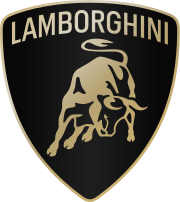 | |
| Type | Fully owned subsidiary[1] |
|---|---|
| Industry | Automotive |
| Founded | 30 October 1963 |
| Founder(s) | Ferruccio Lamborghini |
| Headquarters | Sant'Agata Bolognese,Italy |
| Area served | Worldwide |
| Key people | Stephan Winkelmann, CEO Wolfgang Egger, Head of Design |
| Products | Automobiles |
| Production output | |
| Revenue | US$97.5 million (2002)[2] |
| Profit | US$18.1 million 2006[3] |
| Owner(s) | AUDI AG |
| Employees | 726(2004)[2][unreliable source?] |
| Parent | Volkswagen Group |
| Website | lamborghini.com |
History
[edit]Origin
Main article: Ferruccio Lamborghini
Automobili Lamborghini was founded by Ferruccio Lamborghini, the child of viticulturists from the comune (township) of Renazzo di Cento, Province of Ferrara, in the Emilia-Romagna region of Northern Italy.[1][4] After serving as a mechanic in theRegia Aeronautica[5][6] during World War II, Lamborghini went into business building tractors out of leftover military hardware from the war effort. By the mid-1950s, Lamborghini's tractor company, Lamborghini Trattori S.p.A.,[7] had become one of the largest agricultural equipment manufacturers in the country.[8] He was also the owner of a successful gas heater and air conditioning manufacturer.[5][8][9]
Lamborghini's wealth allowed him to cultivate a childhood interest in cars, owning a number of luxury automobiles including Alfa Romeos, Lancias, Maseratis, and a Mercedes Benz.[9] He purchased his first Ferrari, a 250GT, in 1958, and went on to own several more. Lamborghini was fond of the Ferraris, but considered them too noisy and rough to be proper road cars, likening them to repurposed track cars.[9] When Lamborghini discovered that the clutch on his Ferrari was broken, and actually was the same clutch that he used on his tractors, Lamborghini went to Ferrari and asked for a better replacement. Ferrari responded, saying that he was just a little tractor maker, and could not know anything about sports cars.[9][10][11] Lamborghini decided to pursue an automobile manufacturing venture with the goal of bringing to life his vision of a perfect grand tourer.[8]
[edit]Early 1960s
Prior to founding his company, Lamborghini had commissioned the engineering firm Società Autostar to design a V12 engine for use in his new cars. Lamborghini wanted the engine to have a similar displacement to Ferrari's 3-litre V12; however, he wanted the engine to be designed purely for road use, in contrast to the modified racing engines used by Ferrari in its road cars. Autostar was led by Giotto Bizzarrini, a member of the "Gang of Five" of Ferrari engineers, who had been responsible for creating the famous Ferrari 250 GTO, but left the company in 1961 after founder Enzo Ferrari announced his intention to reorganize the engineering staff.[12] The engine Bizzarrini designed for Lamborghini had a displacement of 3.5 litres, a 9.5:1 compression ratio, and a maximum output of 360 bhp at 9800 rpm.[13] Lamborghini was displeased with the engine's high revolutions and dry-sump lubrication system, both characteristic of the racing engines he specifically did not wish to use; when Bizzarrini refused to change the engine's design to make it more "well-mannered", Lamborghini refused to pay the agreed-upon fee of 4.5 million Italian lire (plus a bonus for every unit of brake horsepower the engine could produce over the equivalent Ferrari engine).[13][14] Lamborghini did not fully compensate the designer until ordered to do so by the courts.[14]
The first Lamborghini chassis design was created by Italian chassis engineer Gian Paolo Dallara of Ferrari and Maserati fame, together with a team that included Paolo Stanzani (then a recent college graduate) and Bob Wallace (a New Zealander who was known at Maserati for his keen sense of chassis handling and excellent feedback and developmental skills).[14][15] The body was styled by the then-relatively unknown designer Franco Scaglione, who was selected by Ferruccio Lamborghini after passing over highly regarded names including Vignale, Ghia, Bertone, andPininfarina.[citation needed]
The Lamborghini 350GTV was designed and built in only four months, in time for an October unveiling at the 1963 Turin Motor Show.[13] Due to the ongoing disagreement with engine designer Giotto Bizzarrini, a working powerplant was not available for the prototype car in time for the show. The car went on display in Turin without an engine under its hood; according to lore, Ferruccio Lamborghini had the engine bay filled with bricks so that the car would sit at an appropriate height above the ground, and made sure that the bonnet stayed closed to hide the missing engine.[14][16] The motoring press gave the 350GTV a warm response.[13]
The Automobili Lamborghini Società per Azioni was officially incorporated on 30 October 1963.[5] Ferruccio Lamborghini purchased a 46,000 square metres (500,000 sq ft) property at Via Modena, 12, in the township of Sant'Agata Bolognese, less than 30 kilometres (19 mi) from Cento; deep in the cradle of Italy's automobile industry, the location provided easy access to skilled labour and facilities.[17] The township was chosen as the location for the factory due to a favorable financial agreement with the city's communist leadership, who promised Lamborghini a 19% interest rate on the company's profits when deposited in the bank, in addition to charging zero tax on the profits. As part of the agreement, the factory would be required to unionize its workers.[17]
Despite the favorable press reviews of the 350GTV, Ferruccio Lamborghini decided to rework the car for production. The production model, which would be called the 350GT, was restyled by Carrozzeria Touring of Milan, and a new chassis was constructed in-house. Bizzarrini's V12 engine would be detuned for mass production, developing only 280 hp rather than the designer's intended 360 bhp.[18] The completed design debuted at the 1964 Geneva Motor Show, once again garnering positive reviews from the press. Production began shortly afterwards, and by the end of the year, cars had been built for 13 customers; Lamborghini sold each car at a loss in order to keep prices competitive with Ferrari's. The 350GT remained in production for a further two years, with a total of 120 cars sold.[19]
[edit]1965–1966
In 1965, Gian Paolo Dallara made improvements to the Bizzarrini V12, increasing its displacement to 3.9 litres, and its power output to 320 bhp at 6,500 rpm.[19] The engine was first installed in the 400GT, essentially a 350GT with the larger engine. At the 1966 Geneva Auto Show, Lamborghini debuted the 400GT 2+2, a stretched revision of the 350GT/400GT that featured 2+2 seating and other minor updates. The 400GT 2+2, like its predecessors, was well received by the motoring press.[20] The revenue from sales of the 2+2 allowed Lamborghini to increase the labour force at his factory to 170 employees, and expand services offered to Lamborghini customers.[19]
During 1965, Dallara, Stanzani, and Wallace invested their personal time into the development of a prototype car that they envisioned as a road car with racing pedigree, capable of winning on the track as well as being driven on the road by enthusiasts.[15] They hoped to eventually sway Ferruccio Lamborghini away from the opinion that such a car would be too expensive and distract from the company's focus. When finally brought aboard, Lamborghini allowed his engineers to go ahead, deciding that the car, known as the P400, would be useful as a potential marketing tool, if nothing more.
The car's rolling chassis, featuring an unusual-for-Lamborghini transversely mounted mid-engine layout, was displayed at the Turin Salon in 1965, impressing showgoers. A version with bodywork styled by Bertone was finished only days before its debut at the 1966 Geneva motor show. As had happened three years earlier at the debut of the 350GTV, an ill-fitting engine meant the prototype's engine bay was filled with ballast, and the hood kept locked.[21] The favorable reaction to the P400 at Geneva led Lamborghini to slate the car for production by 1967, under the name Miura. The Miura's layout and styling would become the standard for mid-engine two-seat high-performance sports cars,[22] a trend that continues today.
Lamborghini now had an offering that positioned the fledgling automaker as a leader in the world of supercars, while the 400GT was the sophisticated road car that Ferruccio Lamborghini had long desired to build. By end of 1966, the workforce at the Sant'Agata factory had expanded to 300, and enough deposits were made by prospective buyers to begin final development on the Miura in 1967. The first four cars produced were kept at the factory, where Bob Wallace continued to improve and refine the car. By December, 108 cars had been delivered.[23]
[edit]1967–1968
Production of the 400GT continued, with Ferruccio Lamborghini seeking to replace the four-year-old design. Lamborghini commissioned Touring, which had styled the 350GT and original 400GT, to design a possible replacement based on the same chassis. Touring's 400 GT Flying Star II did not win Lamborghini's approval. Giorgio Neri and Luciano Bonacini, of Neri and Bonacini coachbuilders in Modena produced their own design, the 400GT Monza, which was rejected as well.[24] Facing mounting financial difficulties, Touring would close its doors later that year.
Ferruccio Lamborghini turned to Bertone designer Mario Marazzi, who had formerly worked at Touring. Together with Lamborghini's engineers, he created a four-seater named the Marzal. The car rode on a stretched Miura chassis, and was powered by an in-line six-cylinder that was made from one-half of Lamborghini's V12 design.[25] Despite an innovative design that featured gullwing doors and enormous glass windows, Lamborghini rejected the design. Eventually, a toned-down version became the Islero 400GT. While the car was not the full four-seater that he desired, Ferruccio Lamborghini thought the car represented a well-developed gran turismo product.[26] It failed to attract buyers, with only 125 cars produced between 1968 and 1969.[27]
New versions of the Miura arrived in 1968; the Miura P400 S (more commonly known as the Miura S) featured a stiffened chassis and more power, with the V12 developing 370 bhp at 7000 rpm. At the 1968 Brussels auto show, the automaker unveiled the Miura P400 Roadster (more commonly the Miura Spider), an open-top version of the coupé. Gandini, by now effectively the head of design at Bertone, had paid great attention to the details, particularly the problems of wind buffeting and noise insulation inherent to a roadster.[28] For all of Gandini's hard work, Sgarzi was forced to turn potential buyers away, as Lamborghini and Bertone were unable to reach a consensus on the size of a theoretical roadster production run. The Miura Spider was sold off to an American metal alloy supplier, who wanted to use it as a marketing device. 1968 was a positive time for all of Ferruccio's businesses, and Automobili delivered 353 cars over the course of the year.[28]
| 1968 video of the Sant'Agata factory, followed by 1969 footage of a drive in an Islero | |
In August 1968, Gian Paolo Dallara, frustrated with Ferruccio Lamborghini's refusal to participate in motorsport, was recruited away from Sant'Agata to head the Formula One programme at rival automakerDe Tomaso in Modena. With profits on the rise, a racing programme would have been a possibility, but Lamborghini remained against even the construction of prototypes, stating his mission as: "I wish to build GT cars without defects – quite normal, conventional but perfect – not a technical bomb."[29] With cars like the Islero and the Espada, his aim to establish himself and his cars as equal or superior to the works of Enzo Ferrari had been satisfied. Dallara's assistant, Paulo Stanzani, would assume his old boss' role as technical director. Unfortunately for Dallara, the De Tomaso F1 programme was underfunded, and the automaker barely survived the experience; the engineer left the company soon after.[30]
[edit]1969–1970
Bertone was able to persuade Lamborghini to allow them to design a brand-new four-seater. The shape was penned by Marcello Gandini, and a bodyshell delivered to Ferruccio for inspection. The businessman was less than pleased with the enormousgullwing doors that Gandini had included, and insisted that the car would have to feature conventional doors.[25] The car that resulted from the collaboration was debuted at the 1969 Geneva show with the name Espada, powered by a 3.9-litre, front-mounted evolution of the factory's V12, producing 325 bhp. The Espada was a runaway success, with a total production run of 1,217 cars over ten years of production.[26]
In 1969, Automobili Lamborghini encountered problems with its fully unionized work force, among which the machinists and fabricators had begun to take one-hour token stoppages as part of a national campaign due to strained relations between the metal workers' union and Italian industry.[30] Ferruccio Lamborghini, who often rolled up his sleeves and joined in the work on the factory floor, was able to motivate his staff to continue working towards their common goal despite the disruptions.
Throughout that year, Lamborghini's product range, then consisting of the Islero, the Espada, and the Miura S, received upgrades across the board, with the Miura receiving a power boost, the Islero being upgraded to "S" trim, and the Espada gaining comfort and performance upgrades which allowed it to reach speeds of up to 160 mph (260 km/h). The Islero was slated to be replaced by a shortened yet higher-performing version of the Espada, the Jarama 400GT. The 3.9-litre V12 was retained, its compression ratio increasing to 10.5:1.[31]
By the time the Jarama was unveiled at the 1970 Geneva show, Paulo Stanzani was at work on a new clean-sheet design, which would use no parts from previous Lamborghini cars. Changes in tax laws and a desire to make full use of the factory's manufacturing capacity meant that the Italian automaker would follow the direction taken by Ferrari, with its Dino 246 and Porsche, with its 911, and produce a smaller, V8-powered 2+2 car, the Urraco. The 2+2 body style was selected as a concession to practicality, with Ferruccio acknowledging that Urraco owners might have children.[31] The single overhead cam V8 designed by Stanzani produced 220 bhp at 5000 rpm. Bob Wallace immediately began road testing and development; the car was to be presented at the 1970 Turin motor show.[31]
In 1970, Lamborghini began development of a replacement for the Miura, which was a pioneering model, but had interior noise levels that Ferruccio Lamborghini found unacceptable and nonconforming to his brand philosophy.[32] Engineers designed a new, longer chassis that placed the engine longitudinally, further away from the driver's seat. Designated the LP 500 for its 4.97-litre version of the company's V12, the prototype was styled by Marcello Gandini at Bertone. The car that was presented was debuted at the 1971 Geneva Motor Show, alongside the final revision of the Miura, the P400 SuperVeloce. Completing the Lamborghini range were the Espada 2, the Urraco P250, and the Jarama GT.[33]
[edit]1971–1972
As a world financial crisis began to take hold, Ferruccio Lamborghini's companies began to run into financial difficulties. In 1971, Lamborghini's tractor company, which exported around half of its production, ran into difficulties. Cento, Trattori's South African importer, cancelled all its orders. After staging a successful coup d'état, the new military government of Bolivia cancelled a large order of tractors that was partially ready to ship from Genoa. Trattori's employees, like Automobili's, were unionized and could not be laid off. In 1972, Lamborghini sold his entire holding in Trattori to SAME, another tractor builder.[7][34]
The entire Lamborghini group was now finding itself in financial troubles. Development at the automaker slowed; the production version of the LP 500 missed the 1972 Geneva Show, and only the P400 GTS version of the Jarama was on display. Faced with a need to cut costs, Paulo Stanzani set aside the LP 500's powerplant, slating a smaller, 4-litre engine for production.[35] Ferruccio Lamborghini began courting buyers for Automobili and Trattori; he entered negotiations with Georges-Henri Rossetti, a wealthy Swiss businessman and friend of Ferruccio's, as well as being the owner of an Islero and an Espada.[35] Ferruccio sold Rossetti 51% of the company for US$600,000, thereby relinquishing control of the automaker he had founded. He continued to work at the Sant'Agata factory; Rossetti rarely involved himself in Automobili's affairs.[34]
[edit]1973–1977
The 1973 oil crisis plagued the sales of high performance cars from manufacturers around the world; the rising price of oil caused governments to mandate new fuel economy laws, and consumers to seek smaller, more practical modes of transportation. Sales of Lamborghini's exotic sports cars, propelled by high-powered engines with high fuel consumption, suffered (the 1986 Countach, powered by a 5.2-litre evolution of the V12 engine, had a 6 mpg-US (39 L/100 km; 7.2 mpg-imp) city and 10 mpg-US (24 L/100 km; 12 mpg-imp) highway United States Environmental Protection Agency rating.[36]
In 1974, Ferruccio Lamborghini sold his remaining 49% stake in the company to René Leimer, a friend of Georges-Henri Rossetti.[1] Having severed all connections with the cars that bore his name, he retired to an estate on the shores of Lake Trasimeno, in the frazione of Panicarola in Castiglione del Lago, a town in the province of Perugia in the Umbria region of central Italy, where he would remain until his last days.[6]
The car shown as the LP 500 in 1971 entered production in 1974 as the Countach LP 400, powered by a smaller, 4.0-litre V12. The first production model was delivered in 1974. In 1976, the Urraco P300 was revamped into the Silhouette, featuring aTarga top and a 3-litre V8. Its poor build quality, reliability, and ergonomics all worked against it, as did the fact that it could only be imported into the U.S. via the "grey market". Only 54 were produced.[37] The Countach was also hampered by its lack of direct participation in the American market until the LP 500 version, released in 1982.
In the 1977 Geneva Motor Show, Lamborghini unveiled its first prototype military vehicle, the "Cheetah", powered by a rear-mounted Chrysler V8 engine. However, the only prototype was destroyed during testing by the U.S. military,[38] causing the company to lose that contract, which ultimately led to the cancellation of a contract from BMW to develop the M1 sports car.
[edit]1978–1986
As the years passed, Lamborghini's situation became even more dire; the company entered bankruptcy in 1978, and the Italian courts took control. In 1980, the Swiss Mimran brothers (Jean-Claude andPatrick),[39] famed food entrepreneurs[40] with a passion for sports cars, were appointed to administer the company during its receivership. During administration, the automaker reworked the failed Silhouette into the Jalpa, which was powered by a 3.5-litre V8 that had been modified by former Maserati great, Giulio Alfieri. More successful than the Silhouette, the Jalpa came closer to achieving the goal of a more affordable, livable version of the Countach.[41] The Countach was also updated, finally allowing it to be sold in the U.S. with the release of the LP 500 model in 1982.[42] By 1984, the company was officially in the hands of the Swiss. The Mimrans began a comprehensive restructuring programme, injecting large amounts of capital into the floundering automaker. The Sant'Agata facilities were rehabilitated, and a worldwide hiring campaign to find new engineering and design talent began in earnest.[1]
The immediate results of the investment were good. A Countach "Quattrovalvole", producing a mighty 455 PS (335 kW; 449 hp), was released in 1984; the fumbling Cheetah project resulted in the release of the Lamborghini LM002 sport utility vehicle in 1986. Lamborghini were also looking toward the future, displaying the Countach Evoluzione, a prototype supercar completely made of carbon fiber, to the international press in 1986. The Evoluzione was shown during its testing schedule, which ended with its destruction in a crash test.[citation needed] However, despite the Mimrans' efforts, the investments proved insufficient to revive the company. Seeking a large, stable financial partner, the brothers met with representatives of one of America's "Big Three" automakers, the Chrysler Corporation.[1]
[edit]1987–1993
In April 1987, in an acquisition spearheaded by Chrysler chairman Lee Iacocca, the American company took control of the Italian automaker, after paying out US$33 million[Notes 2] to the Mimrans.[43]According to Jolliffe, the Mimran brothers were the only owners of Lamborghini to ever make money out of the company, having sold it for many times the dollar amount they paid for it six years earlier.[43]
Iacocca, who had previously orchestrated a near-miraculous turnaround of Chrysler after the company nearly fell into bankruptcy, carried out his decision to purchase Lamborghini with no challenges from the board of directors. Chrysler people were appointed to Lamborghini's board, but many of the company's key members remained in managing positions, including Alfieri, Marmiroli, Venturelli, and Ceccarani. Ubaldo Sgarzi continued in his role as head of the sales department.[44] To begin its revival, Lamborghini received a cash injection to the tune of $50 million.[1] The automaker's new owner was interested in entering the "extra premium" sports car market, which it estimated at about 5,000 cars per year, worldwide. Chrysler aimed to produce a car to compete with the Ferrari 328 by 1991,[44] and also wanted the Italians to produce an engine that could be used in a Chrysler car for the American market. The decision was made to finally take the company into motorsport; the effort would be known as Lamborghini Engineering S.p.A., and would develop engines for Grand Prix teams. The new division was based in Modena, and given an initial budget of $5 million.[45] Danielle Audetto would be the manager, and Emile Novaro the president; their first recruit was Mauro Forghieri, a man with a stellar reputation in the world of motorsport, who had formerly managed Ferrari's Formula 1 team. Forghieri set about designing a 3.5-litre V12 engine, independent of road-car engine design undertaken at Sant'Agata.[46]
At the time, Lamborghini was working on a successor to the Countach, the Diablo. The car's original design had been penned by Marcello Gandini, the veteran who had penned the exterior appearances of the Miura and the Countach while working for coachbuilder Bertone. However, Chrysler executives, unimpressed with Gandini's work, commissioned the American car-maker's own design team to execute a third extensive redesign of the car's body, smoothing out the trademark sharp edges and corners of Gandini's original design; the Italian was left famously unimpressed with the finished product.[47][48] The Diablo had been intended for release in time for September 1988, when Lamborghini would celebrate its 25th anniversary; once it was clear that mark would be missed, a final version of the Countach was rushed into production instead.[49]
By the end of 1987, Emile Novaro had returned from his long recovery, and used his authority to halt Chrysler's increasing interference in the development of the Diablo. Much to the chagrin of the Fighting Bull, Chrysler exhibited a four-door concept car at the Frankfurt Auto Show, badged as a 'Chrysler powered by Lamborghini'. The Portofino was poorly received by the motoring press and Lamborghini's employees alike,[50] but went on to become the inspiration for the Dodge Intrepid sedan.
In April 1988, the Bertone Genesis, a Quattrovalvole V12-powered, Lamborghini-branded vehicle resembling a minivan was debuted at the Turin motor show. The unusual car, intended to gauge public reactions, was abandoned, a misfit in both Lamborghini's and Chrysler's product ranges.[50] The Genesis had been commissioned alongside the new "baby Lambo" that would replace the Jalpa, occupying the then-empty space below the Diablo in Lamborghini's lineup. The project had been allocated a $25 million budget, with the prospect of selling more than 2,000 cars per year.[50]
The Diablo was released to the public on 21 January 1990, at an event at the Hotel de Paris in Monte Carlo. The Diablo was the fastest car in production in the world at the time,[citation needed] and sales were so brisk that Lamborghini began to turn a profit. The company's U.S. presence had previously consisted of a loosely affiliated and disorganized private dealer network; Chrysler established an efficient franchise with full service and spare parts support. The company also began to develop its V12 engines for powerboat racing. Profits increased past the $1 million mark in 1991, and Lamborghini enjoyed a positive era.[1]
The uptick in fortunes was to be brief; in 1992, sales crashed, as the $239,000 Diablo proved ultimately to be inaccessible to American enthusiasts. With Lamborghini bleeding money, Chrysler decided that the automaker was no longer producing enough cars to justify its investment.
[edit]1994–1997
Chrysler began looking for someone to take Lamborghini off its hands, and found it in a holding company called MegaTech. The company was registered in Bermuda and wholly owned by Indonesian conglomerate SEDTCO Pty., headed by businessmen Setiawan Djody and Tommy Suharto, the youngest son of then-Indonesian President Suharto. By February 1994, after $40 million had changed hands, Lamborghini had left Italian ownership, and MegaTech took over the automaker, its Modena racing engine factory, and the American dealer interest, Lamborghini USA.[1] Djody, who also owned a 35% stake in troubled American supercar manufacturer Vector Motors, thought Vector and Lamborghini might be able to collaborate to improve their output. Michael J. Kimberly, formerly of Lotus, Jaguar and executive vice-president of General Motors, was appointed president and managing director. After reviewing the entire Lamborghini operation, Kimberly concluded that the company needed to expand its offerings from more than just one or two models, and provide a car accessible to American car enthusiasts. He implemented a marketing strategy to raise awareness of Lamborghini's heritage and mystique. In 1995, Lamborghini produced a hit, when the Diablo was updated to the top-end SuperVeloce model. But in 1995, even as sales were climbing, the company was restructured, with Tommy Suharto's V'Power Corporation holding a 60% interest, MyCom Bhd., a Malaysian company controlled by Jeff Yap, holding the other 40%.[1]
Never leaving the red despite its increase in sales, in November 1996 Lamborghini hired Vittorio di Capua as President and CEO, hoping that the veteran of more than 40 years at auto giant Fiat S.p.A. could finally make the sports car maker profitable again. Di Capua immediately launched cost-cutting measures, letting go of a number of company executives and consultants, and overhauling production in order to achieve a 50 percent gain in productivity. In 1997, Lamborghini finally passed its break-even point, selling 209 Diablos, thirteen more than it needed to be profitable. Di Capua also leveraged the Lamborghini name and identity, implementing aggressive merchandising and licensing deals. Development of the "baby Lambo" finally began, moving forward with a $100 million budget.[1]
[edit]1998–2007
The financial crisis that gripped Asia in July of that year set the stage for another ownership change. The new chairman of Volkswagen AG, Ferdinand Piëch, grandson of Volkswagen's founder, Ferdinand Porsche, went on a buying spree through 1998, which included the acquisition of Lamborghini for around $110 million. Lamborghini was purchased through Volkswagen's luxury car division, AUDI AG. Audi spokesman Juergen de Graeve told the Wall Street Journal that Lamborghini "could strengthen Audi's sporty profile, and on the other hand Lamborghini could benefit from our technical expertise."[1]
Only five years after leaving American ownership, Lamborghini was now under German control. Yet again, the troubled Italian automaker was reorganized, becoming restructured into a holding company, Lamborghini Holding S.p.A., with Audi president Franz-Josef Paefgen as its chairman. Automobili Lamborghini S.p.A. became a subsidiary of the holding company, allowing it to focus specifically on designing and building cars while separate interests took care of the company's licensing deals and marine engine manufacturing. Vittorio Di Capua originally remained in charge, but eventually resigned in June 1999. He was replaced by Giuseppe Greco, another industry veteran with experience at Fiat, Alfa Romeo, and Ferrari. The Diablo's final evolution, the GT, was released, but not exported to the U.S., its low-volume production making it uneconomical to go through the process of gaining emissions and crashworthiness approval.
In much the same way that American ownership had influenced the design of the Diablo, Lamborghini's new German parent played a large role in the creation of the Diablo's replacement. The first new Lamborghini in more than a decade, known internally as Project L140, represented the rebirth of Lamborghini, and was named, fittingly, for the bull that originally sired the Miura line that had inspired Ferruccio Lamborghini almost 40 years before: Murciélago. The new flagship car was styled by Belgian Luc Donckerwolke, Lamborghini's new head of design.
Under German ownership, Lamborghini found stability that it had not seen in many years. In 2003, Lamborghini followed up the Murciélago with the smaller, V10-equipped Gallardo, intended to be more accessible and more livable than the Murciélago. In 2007, Wolfgang Egger was appointed as the new head of design of Audi and Lamborghini, replacing Walter de'Silva, who was responsible for the design of only one car during his appointment, the Miura Concept of 2006.
[edit]2008–2010
Towards the end of the 2000s, Lamborghini produced a number of revisions of the Murciélago and Gallardo. The Reventón, a limited-edition derivative of the Murciélago featuring revised, angular styling, was released in 2008, with a roadster following the year after.
The final update to the Murciélago came in 2009 with the release of the LP 670–4 SV ("SuperVeloce"). The 4,000th Murciélago was produced in 2010. The car was delivered to China. At the time, the growing Asia-Pacific vehicle market represented 25 percent of Lamborghini's sales.[51]
A slide in Lamborghini's sales that began at a high of 2,580 units in 2007 was attributed to the effects of the world financial crisis. CEO Stephan Winkelmann predicted that poor sales figures for supercars would continue through 2011.[52]
Production of the Murciélago ended on 5 November 2010, after a production run of 4,099 cars.[53][54][55]
[edit]2011–present
The Lamborghini Aventador has replaced the Lamborghini Murciélago. It was unveiled on 1 March 2011 at the 2011 Geneva Motor Show. The Aventador has a top speed of 349 km/h (217 mph).[56]
At the 2011 Frankfurt Motor Show, Lamborghini revealed the Lamborghini Gallardo LP 570–4 Super Trofeo Stradale.[57]
[edit]Vehicle lineup
Main article: List of Lamborghini automobiles
[edit]Current range
As of the 2012 model year, Lamborghini's product range consists entirely of mid-engine two-seat sports cars: the V12-powered Aventador LP 700–4, and variants of the smaller, V10-powered Lamborghini Gallardo: LP 560–4, LP 550–2 and LP 570–4.[58] Limited-production editions of these cars are also produced from time to time.
[edit]Concept models
Throughout its history, Lamborghini has envisioned and presented a variety of concept cars, beginning in 1963 with the very first Lamborghini prototype, the 350GTV. Other famous models include Bertone's 1967 Marzal, 1974 Bravo, and 1980 Athon, Chrysler's 1987 Portofino, the Italdesign-styled Cala from 1995, the Zagato-built Raptor from 1996, and Lamborghini Pregunta.
A retro-styled Lamborghini Miura concept car, the first creation of chief designer Walter de'Silva, was presented in 2006. President and CEO Stephan Winkelmann denied that the concept would be put into production, saying that the Miura concept was "a celebration of our history, but Lamborghini is about the future. Retro design is not what we are here for. So we won’t do the [new] Miura.”[59]
At the 2008 Paris Motor Show, Lamborghini revealed the Estoque, a four-door sedan concept. Although there had been much speculation regarding the Estoque's eventual production,[60][61] Lamborghini management has not made a decision regarding production of what might be the first four-door car to roll out of the Sant'Agata factory.[62]
At the 2010 Paris Motor Show, Lamborghini unveiled the Sesto Elemento. The concept car is made almost entirely of carbon fibre making it extremely light, weighing only 999 kg. The Sesto Elemento shares the same V10 engine found in the Lamborghini Gallardo. Lamborghini hopes to signal a shift in the company's direction from making super cars focused on top speed to producing more agile, track focused cars with the Sesto Elemento. The concept car can reach 0–62 in 2.5 seconds and can reach a top speed of over 180 mph.[63]
At the 2012 Geneva Motor Show, Lamborghini unveiled the Aventador J – a roofless, windowless version of the Lamborghini Aventador. The Aventador J uses the same 700 hp engine and seven-speed transmission as the standard Aventador.[64]
At the 2012 Beijing Motor Show, Lamborghini unveiled the Urus SUV. This is the first SUV By Lamborghini since the LM002.
[edit]Motorsport
In contrast to his rival Enzo Ferrari, Ferruccio Lamborghini had decided early on that there would be no factory-supported racing of Lamborghinis, viewing motorsport as too expensive and too draining on company resources.[citation needed] This was unusual for the time, as many sports car manufacturers sought to demonstrate the speed, reliability, and technical superiority through motorsport participation. Enzo Ferrari in particular was known for considering his road car business merely a source of funding for his participation in motor racing. Ferruccio's policy led to tensions between him and his engineers, many of whom were racing enthusiasts; some had previously worked at Ferrari. When Dallara, Stanzani, and Wallace began dedicating their spare time to the development of the P400 prototype, they designed it to be a road car with racing potential, one that could win on the track and also be driven on the road by enthusiasts.[15] When Ferruccio discovered the project, he allowed them to go ahead, seeing it as a potential marketing device for the company, while insisting that it would not be raced. The P400 went on to become the Miura. The closest the company came to building a true race car under Lamborghini's supervision were a few highly modified prototypes, including those built by factory test driver Bob Wallace, such as the Miura SV-based "Jota" and the Jarama S-based "Bob Wallace Special".
Under the management of Georges-Henri Rossetti, Lamborghini entered into an agreement with BMW to build a production racing car in sufficient quantity for homologation. However, Lamborghini was unable to fulfill its part of the agreement. The car was eventually developed in-house by the BMW Motorsport Division, and was manufactured and sold as the BMW M1.[65][66]
In the 1980s, Lamborghini developed the QVX for the 1986 Group C championship season. One car was built, but lack of sponsorship caused it to miss the season. The QVX competed in only one race, the non-championship 1986 Southern Suns 500 km race at Kyalami in South Africa, driven by Tiff Needell. Despite the car finishing better than it started, sponsorship could once again not be found and the programme was cancelled.[67]
Lamborghini was an engine supplier in Formula One between the 1989 and 1993 Formula One seasons. It supplied engines to Larrousse (1989–1990,1992–1993), Lotus (1990), Ligier (1991), Minardi (1992), and to the Modena team in 1991. While the latter is commonly referred to as a factory team, the company saw themselves as a supplier, not a backer. The 1992 Larrousse–Lamborghini was largely uncompetitive but noteworthy in its tendency to spew oil from its exhaust system. Cars following closely behind the Larrousse were commonly coloured yellowish-brown by the end of the race.[citation needed]
In late 1991, a Lamborghini Formula One motor was used in the Konrad KM-011 Group C sports car, but the car only lasted a few races before the project was canceled. The same engine, re-badged a Chrysler, Lamborghini's then-parent company, was tested by McLaren towards the end of the 1993 season, with the intent of using it during the 1994 season. Although driver Ayrton Senna was reportedly impressed with the engine's performance, McLaren pulled out of negotiations, choosing aPeugeot engine instead, and Chrysler ended the project.
Two racing versions of the Diablo were built for the Diablo Supertrophy, a single-model racing series held annually from 1996 to 1999. In the first year, the model used in the series was the Diablo SVR, while the Diablo 6.0 GTR was used for the remaining three years.[68][69] Lamborghini developed the Murciélago R-GT as a production racing car to compete in the FIA GT Championship, the Super GTChampionship and the American Le Mans Series in 2004. The car's highest placing in any race that year was the opening round of the FIA GT Championship at Valencia, where the car entered by Reiter Engineering finished third from a fifth-place start.[70][71] In 2006, during the opening round of the Super GT championship at Suzuka, a car run by the Japan Lamborghini Owners Club garnered the first victory (in class) by an R-GT. A GT3 version of the Gallardo has been developed by Reiter Engineering.[72] A Murciélago R-GT entered by All-Inkl.com racing, driven by Christophe Bouchut and Stefan Mücke, won the opening round of the FIA GT Championship held at Zhuhai International Circuit, achieving the first major international race victory for Lamborghini.[73]
[edit]Identity
The world of bullfighting is a key part of Lamborghini's identity.[74][75][76] In 1962, Ferruccio Lamborghini visited the Seville ranch of Don Eduardo Miura, a renowned breeder of Spanish fighting bulls. Lamborghini, a Taurus himself, was so impressed by the majestic Miura animals that he decided to adopt a raging bull as the emblem for the automaker he would open shortly.[12]
After producing two cars with alphanumeric designations, Lamborghini once again turned to the bull breeder for inspiration. Don Eduardo was filled with pride when he learned that Ferruccio had named a car for his family and their line of bulls; the fourth Miura to be produced was unveiled to him at his ranch in Seville.[12][21]
The automaker would continue to draw upon the bullfighting connection in future years. The Islero was named for the Miura bull that killed the famed bullfighter Manolete in 1947. Espada is the Spanish word for sword, sometimes used to refer to the bullfighter himself. The Jarama's name carried a special double meaning; intended to refer only to the historic bullfighting region in Spain, Ferruccio was concerned about confusion with the also historic Jarama motor racing track.[31]
After christening the Urraco after a bull breed, in 1974, Lamborghini broke from tradition, naming the Countach not for a bull, but for countach! (pronounced [kunˈtɑtʃ] ( listen)), an exclamation of astonishment used by Piedmontese men upon sighting a beautiful woman.[77] Legend has it that stylist Nuccio Bertone uttered the word in surprise when he first laid eyes on the Countach prototype, "Project 112".[78] The LM002 (LM for Lamborghini Militaire) sport utility vehicle and the Silhouette (named after the popular racing category of the time) were other exceptions to the tradition.
listen)), an exclamation of astonishment used by Piedmontese men upon sighting a beautiful woman.[77] Legend has it that stylist Nuccio Bertone uttered the word in surprise when he first laid eyes on the Countach prototype, "Project 112".[78] The LM002 (LM for Lamborghini Militaire) sport utility vehicle and the Silhouette (named after the popular racing category of the time) were other exceptions to the tradition.
The Jalpa of 1982 was named for a bull breed; Diablo, for the Duke of Veragua's ferocious bull famous for fighting an epic battle against "El Chicorro" in Madrid in 1869;[46][47] Murciélago, the legendary bull whose life was spared by "El Lagartijo" for his performance in 1879; Gallardo, named for one of the five ancestral castes of the Spanish fighting bull breed;[79] and Reventón, the bull that defeated young Mexican torero Félix Guzmán in 1943. TheEstoque concept of 2008 was named for the estoc, the sword traditionally used by matadors during bullfights.[80]
[edit]Corporate affairs
Currently, Lamborghini is structured as part of the Lamborghini Group, consisting of Audi-owned holding company Automobili Lamborghini Holding S.p.A., which controls three separate companies: Automobili Lamborghini S.p.A., manufacturer of cars; Motori Marini Lamborghini S.p.A., maker of marine engines; and Lamborghini ArtiMarca S.p.A., the licensing and merchandising company.[1] The group additionally contains Volkswagen Group Italia S.p.A. (formerly AUTOGERMA S.p.A.[81]), which sells Audi and other Volkswagen brands vehicles in Italy, and Volkswagen Group Firenze S.p.A.[82] In May 2010, the Italian coachbuilder Italdesign Giugiaro came under the control of Lamborghini Holding, as the Volkswagen Group purchased 90.1% of the company's shares from the Giugiaro family.[83]
The most important markets in 2004 for Automobili Lamborghini's sports cars are the U.S. (41%), Germany (13%), Great Britain (9%), and Japan (8%). Prior to the launch of the Gallardo, the company produced around 400 cars per year.[2][unreliable source?]
Motori Marini Lamborghini produces a large V12 marine engine block for use in powerboat racing, notably the World Offshore Series Class 1. The engine displaces around 8,171 cc (499 cu in) with an output of around 940 hp (700 kW).[84]
Automobili Lamborghini Artimarca licenses Automobili Lamborghini's name and image for use on other companies' products and accessories. Examples include a variety of apparel items, various model car lines, and the ASUS Lamborghini VX series notebook computers.
[edit]Sales history
| This section requires expansion. (April 2009) |
| Year | Units sold | |||||||||||||||||||||||||||||||||||||||||||||||||
|---|---|---|---|---|---|---|---|---|---|---|---|---|---|---|---|---|---|---|---|---|---|---|---|---|---|---|---|---|---|---|---|---|---|---|---|---|---|---|---|---|---|---|---|---|---|---|---|---|---|---|
| 500 | 1,000 | 1,500 | 2,000 | 2,500 | ||||||||||||||||||||||||||||||||||||||||||||||
| Ferruccio Lamborghini (1963–1972) | ||||||||||||||||||||||||||||||||||||||||||||||||||
| 1968[28] | 353 | |||||||||||||||||||||||||||||||||||||||||||||||||
| Georges-Henri Rossetti and René Leimer (1972–1977) | ||||||||||||||||||||||||||||||||||||||||||||||||||
| Receivership (1977–1984) | ||||||||||||||||||||||||||||||||||||||||||||||||||
| Patrick Mimran (1984–1987) | ||||||||||||||||||||||||||||||||||||||||||||||||||
| Chrysler Corporation (1987–1994) | ||||||||||||||||||||||||||||||||||||||||||||||||||
| 1991[1] | 673 | |||||||||||||||||||||||||||||||||||||||||||||||||
| 1992[1] | 166 | |||||||||||||||||||||||||||||||||||||||||||||||||
| 1993[1] | 215 | |||||||||||||||||||||||||||||||||||||||||||||||||
| MegaTech (1994–1995) | ||||||||||||||||||||||||||||||||||||||||||||||||||
| V'Power and Mycom Sedtco (1995–1998) | ||||||||||||||||||||||||||||||||||||||||||||||||||
| 1996[85] | 211 | |||||||||||||||||||||||||||||||||||||||||||||||||
| 1997[1] | 209 | |||||||||||||||||||||||||||||||||||||||||||||||||
| AUDI AG (1998–present) | ||||||||||||||||||||||||||||||||||||||||||||||||||
| 2001[86] | 297 | |||||||||||||||||||||||||||||||||||||||||||||||||
| 2002[86] | 424 | |||||||||||||||||||||||||||||||||||||||||||||||||
| 2003[87] | 1,305 | |||||||||||||||||||||||||||||||||||||||||||||||||
| 2004[87] | 1,592 | |||||||||||||||||||||||||||||||||||||||||||||||||
| 2005[88] | 1,600 | |||||||||||||||||||||||||||||||||||||||||||||||||
| 2006[81] | 2,087 | |||||||||||||||||||||||||||||||||||||||||||||||||
| 2007[89] | 2,406 | |||||||||||||||||||||||||||||||||||||||||||||||||
| 2008[90] | 2,430 | |||||||||||||||||||||||||||||||||||||||||||||||||
| 2009[91] | 1,515 | |||||||||||||||||||||||||||||||||||||||||||||||||
| 2010[92] | 1,302 | |||||||||||||||||||||||||||||||||||||||||||||||||
[edit]Lamborghini of Latin America
Automóviles Lamborghini Latinoamérica S.A. (Lamborghini Automobiles of Latin America S.A.) was a Mexican company that built cars bearing the Lamborghini name under license from the Italian automaker. The licensing agreement was struck in 1995, while Automobili Lamborghini was owned by Indonesian corporation MegaTech and helmed by Michael Kimberly. The Mexican group was allowed to sell merchandise related to Lamborghini, and the contract included a clause that allowed them to "carry on the promotion and sale worldwide, of the vehicles which are manufactured or assembled with its "own restyling" within the Territory of the Mexican United States, and/or Latinoamerica." Automóviles Lamborghini has produced two rebodied versions of the Diablo called the Eros and the Coatl under its licensing agreement. The company is currently led by Jorge Antonio Fernandez Garcia.[93] As of July 2010, the company's website . In addition, the company plans to start producing parts in the Argentine province of Santiago del Estero in 2011, and cars in 2012.





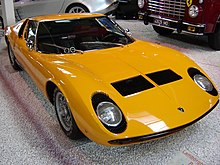
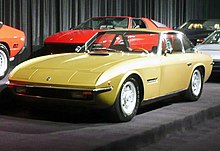





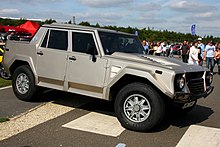
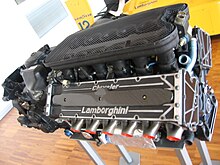


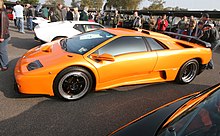


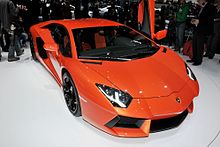
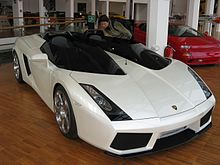
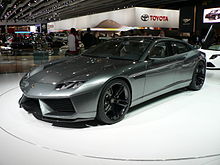

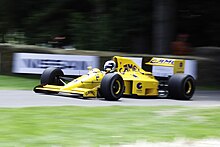
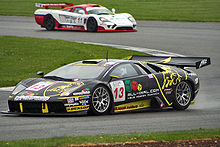
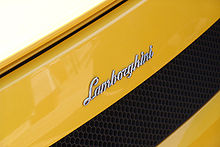
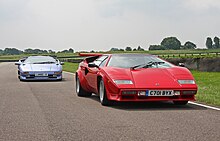
No comments:
Post a Comment